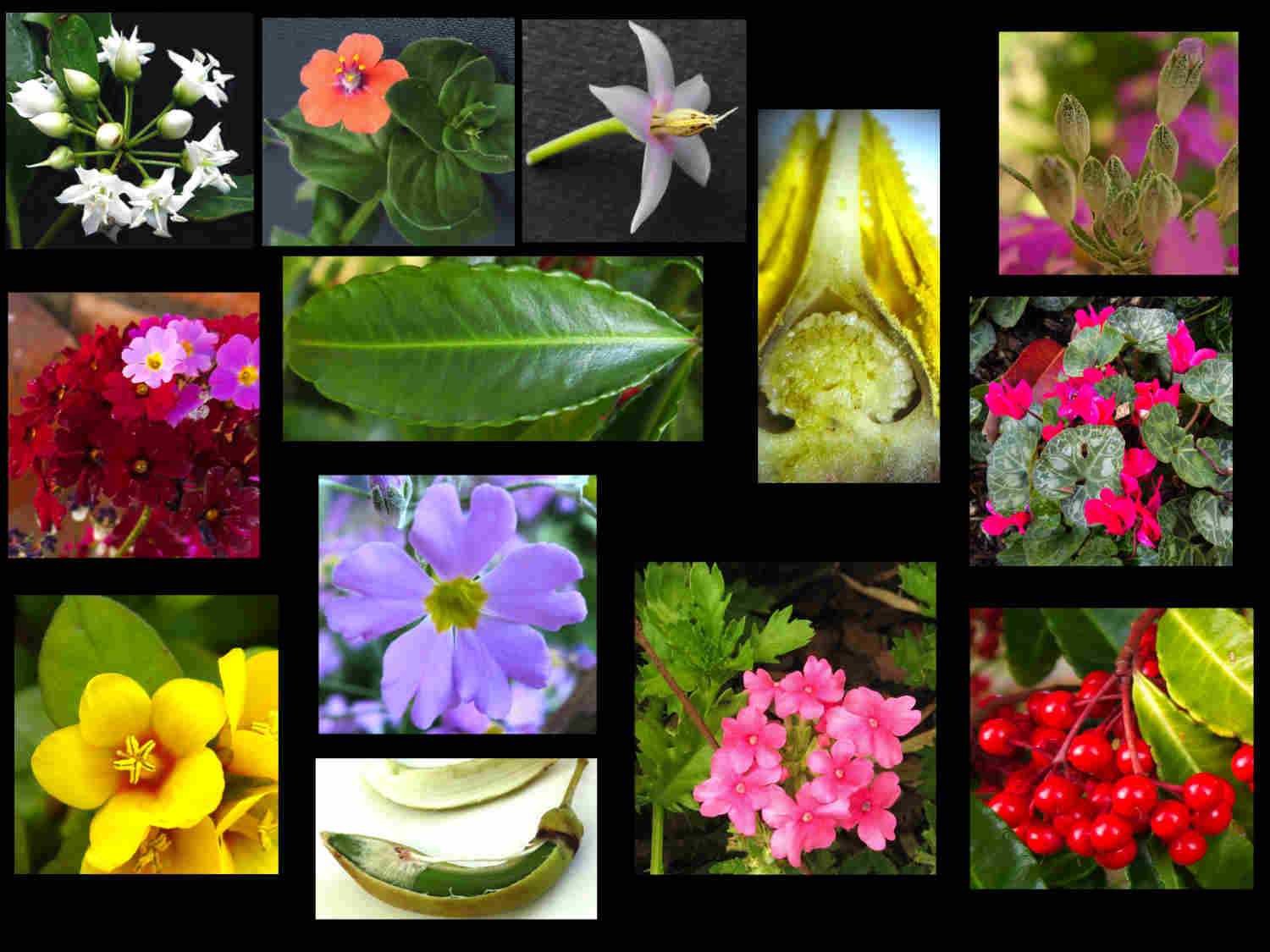Primulaceae.
The primrose family.
Peviously Maesaceae, Myrsinaceae, Theophrastaceae and the strictly defined Primulaceae s.s. were separate families.
They have now been reduced to subfamilies within a new loosely defined family Primulaceae s.l. although they are still seen as separate families including in some parts of Australia.
Currently Primulaceae s.l. has around 54 (53 to 58) genera with thousands of species including Aegiceras, Ardisia, Cyclamen and Lysimachia.
Common features of them all include having partly fused petals with one stamen opposite each lobe and ovules on a stalk attached to the base of the single locule in the ovary.
Most are perennial herbs, shrubs or trees.
The usually simple leaves, on a petiole can be alternate, opposite or whorled.
Leaf edges can be smooth or have blunt or sharp teeth.
There are no stipules.
Leaves have stomata (pores or circular openings ) and hairs and many have hydathodes which are glands to release water.
Flowers can be axillary but are frequently terminal and can be solitary or in a variously arranged cluster.
The 5 (3 to 9) basally fused sepals and the opposite basally fused petals are each in 1 whorl.
Petals, sometimes lobed can be red, blue, yellow, purple or green as well as white.
The 5 (3 to 9) or 10 stamens are inserted onto the corolla tube opposite a petal lobe.
They can be in 1 or 2 whorls and there may be some infertile staminodes.
Anthers open inwards through pores or longitudinal slits.
The superior ovary, of 3 to 5 fused carpels has one locule with one to many ovules attached to a placenta arising from the base of the locule (free central placentation).
There is one style with a single stigma.
Fruit can be a non-fleshy capsule that can open in various ways to release the seeds although some do not open.
They can also be a drupe with a single seed or a berry.
J.F.


